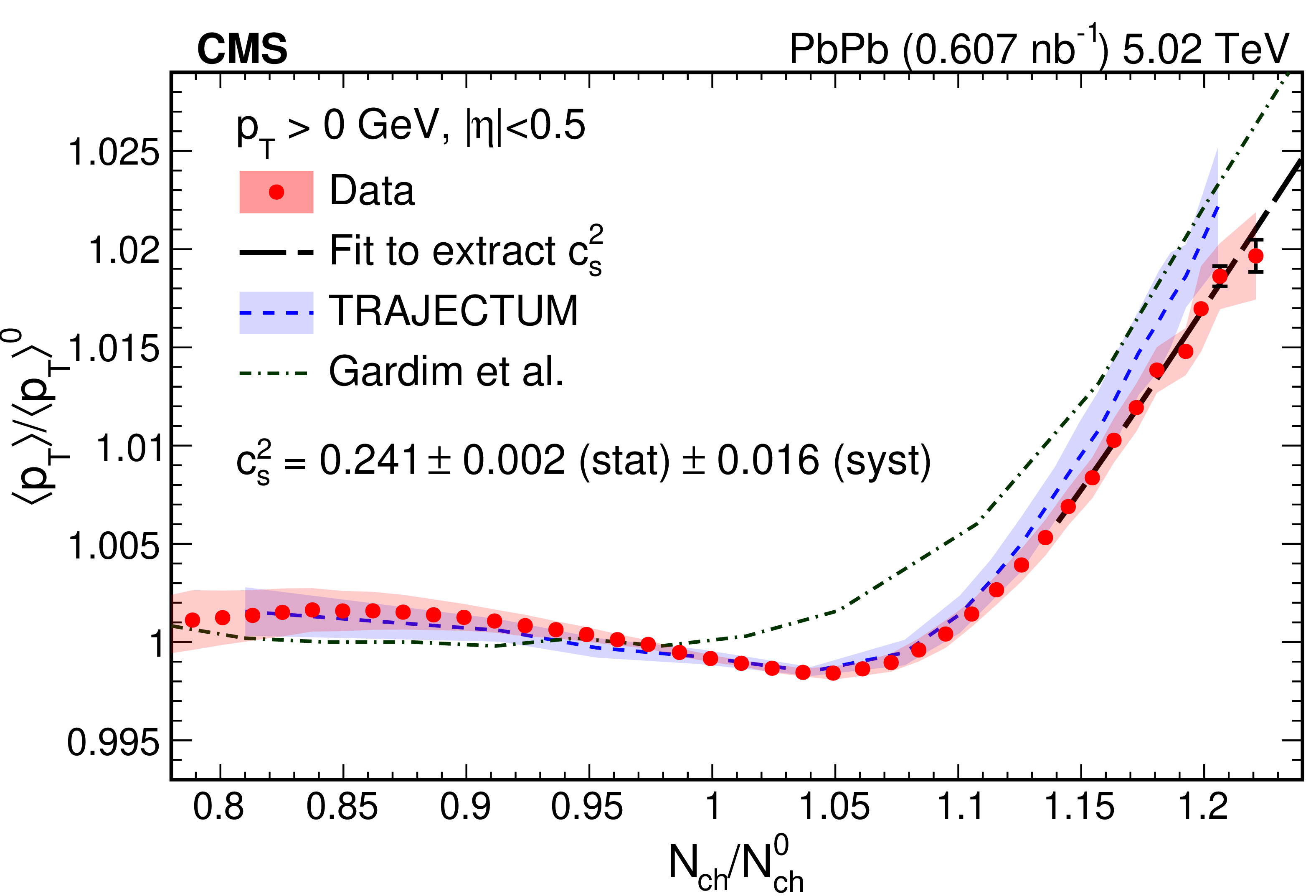
Collisions between nuclei of lead atoms are carried out at the Large Hadron Collider (LHC) at CERN to study the quark-gluon plasma, a state of matter where neutrons and protons are dissociated into their elementary constituents, quarks and gluons. Its temperature at the LHC has been measured to be (2.540+-0.090) trillion Kelvin [1], [3]. Another important thermodynamic property is the compressibility, which is related to the speed of sound through standard thermodynamic identities.
Back in 2019, Fernando Gardim (a physicist from Brazil who was on sabbatical leave at IPhT), Giuliano Giacalone (PhD student at IPhT) and Jean-Yves Ollitrault (IPhT) proposed to extract the speed of sound from LHC data by analyzing "ultracentral" collisions, defined as collisions at zero impact parameter [2]. The number of particles in ultracentral collisions can vary by 10-15%, corresponding to a variation of density, which can be used to probe the compressibility. They predicted that the momentum per particle, which is proportional to the temperature, should increase as a function of the multiplicity, and that the relative change would provide a direct measure of the speed of sound.
This prediction [2] has motivated a dedicated analysis by the CMS collaboration at the LHC [3]. CMS has recently observed the predicted increase of the momentum per particle and extracted a precise measure of the speed of sound, (49.1 +- 1.6)% of the speed of light, in perfect agreement with first-principles calculations from the theory of strong interactions, QCD.
[1] "Thermodynamics of hot strong-interaction matter from ultrarelativistic nuclear collisions", Fernando G. Gardim, Giuliano Giacalone, Matthew Luzum, and Jean-Yves Ollitrault. Nature Physics Letters 16 (2020) 615-619, https://doi.org/10.1038/s41567-020-0846-4
Voir aussi : https://www.ipht.fr/Phocea/Vie_des_labos/News/index.php?id_news=1032
[2] "Measuring the speed of sound of the quark-gluon plasma in ultracentral nucleus-nucleus collisions", Fernando G. Gardim, Giuliano Giacalone, Jean-Yves Ollitrault https://arxiv.org/abs/1909.11609v1. Physics Letters B 809 (2020) 135749 https://doi.org/10.1016/j.physletb.2020.135749
[3] "Extracting the speed of sound in the strongly interacting matter created in ultrarelativistic lead-lead collisions at the LHC", CMS Collaboration, https://arxiv.org/abs/2401.06896. Submitted to Reports on Progress in Physics.

